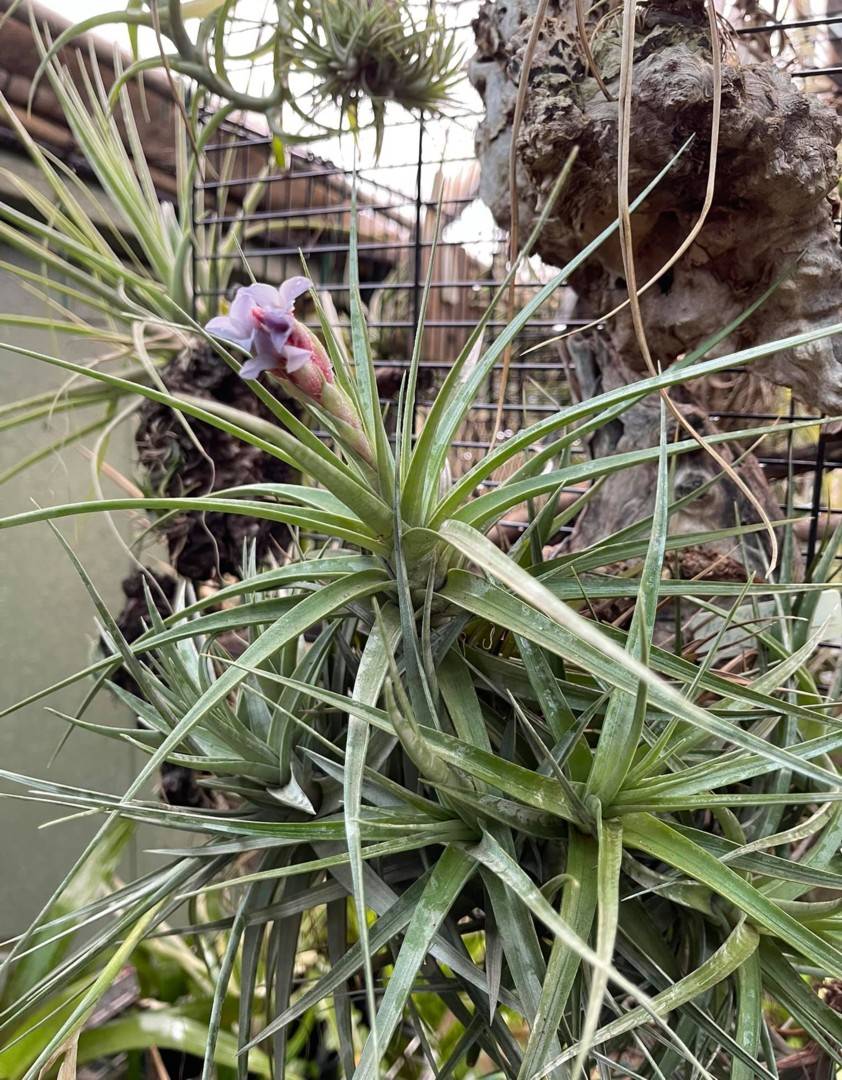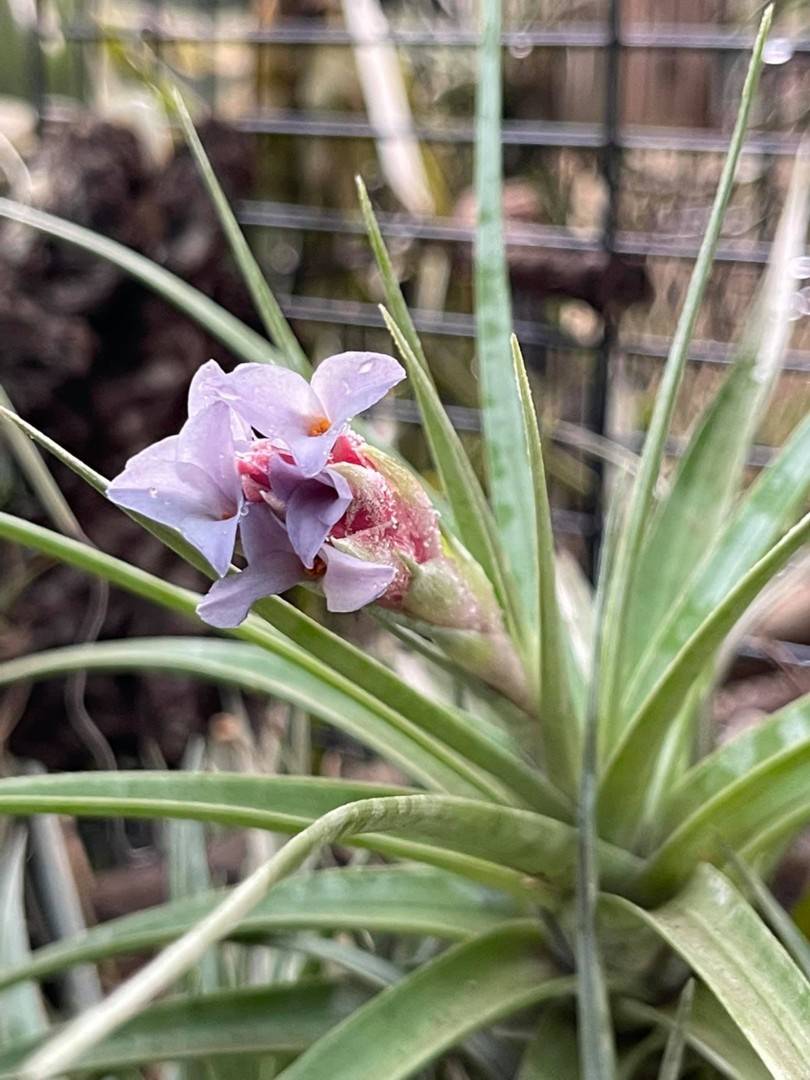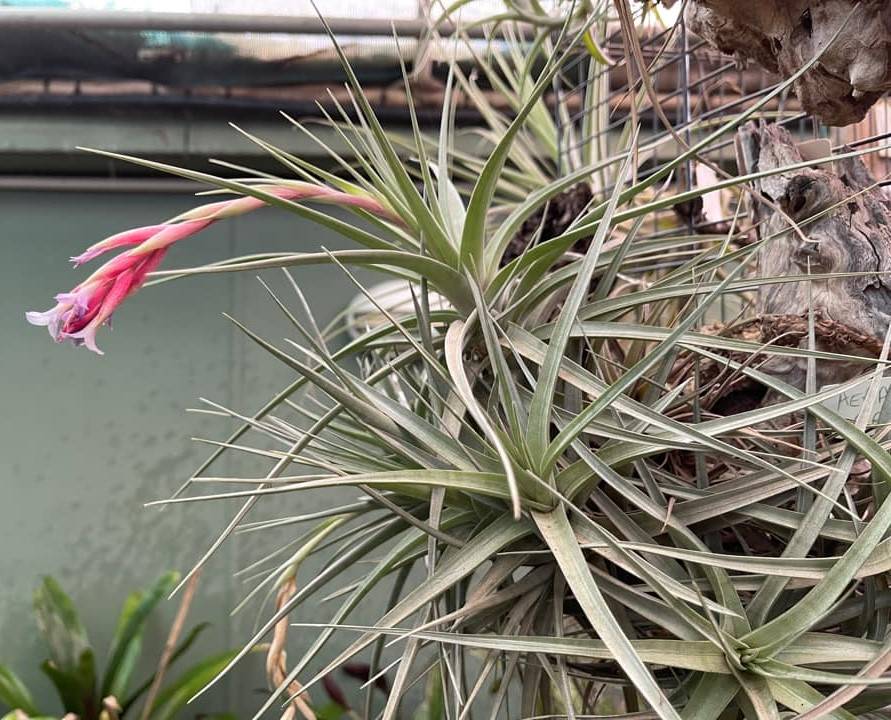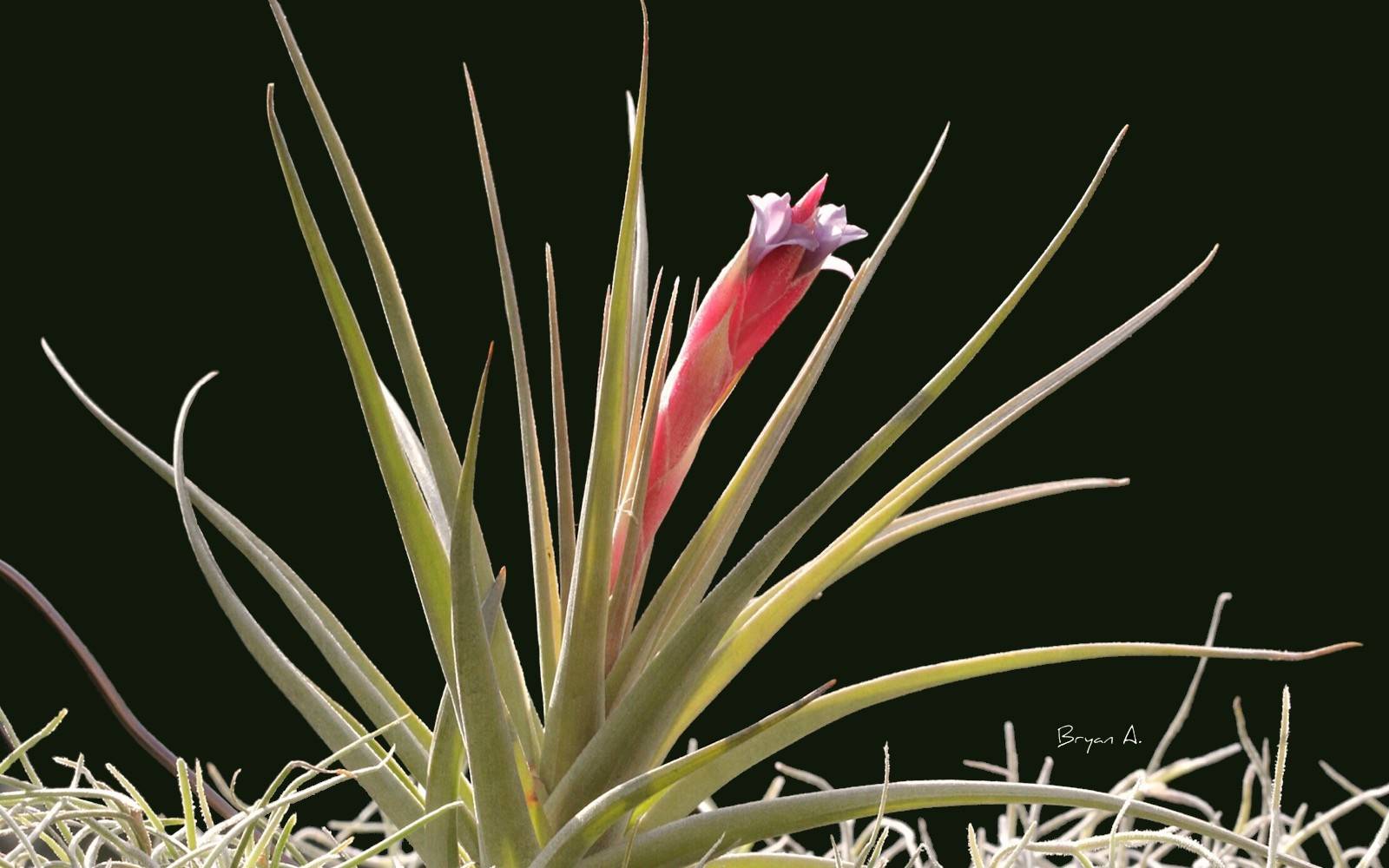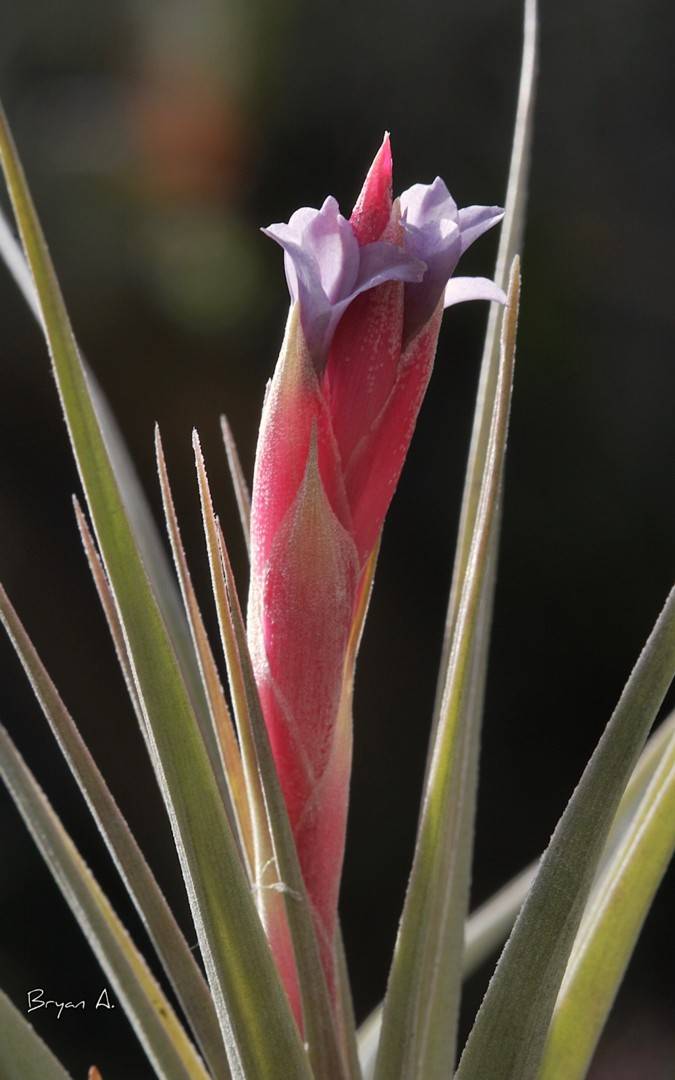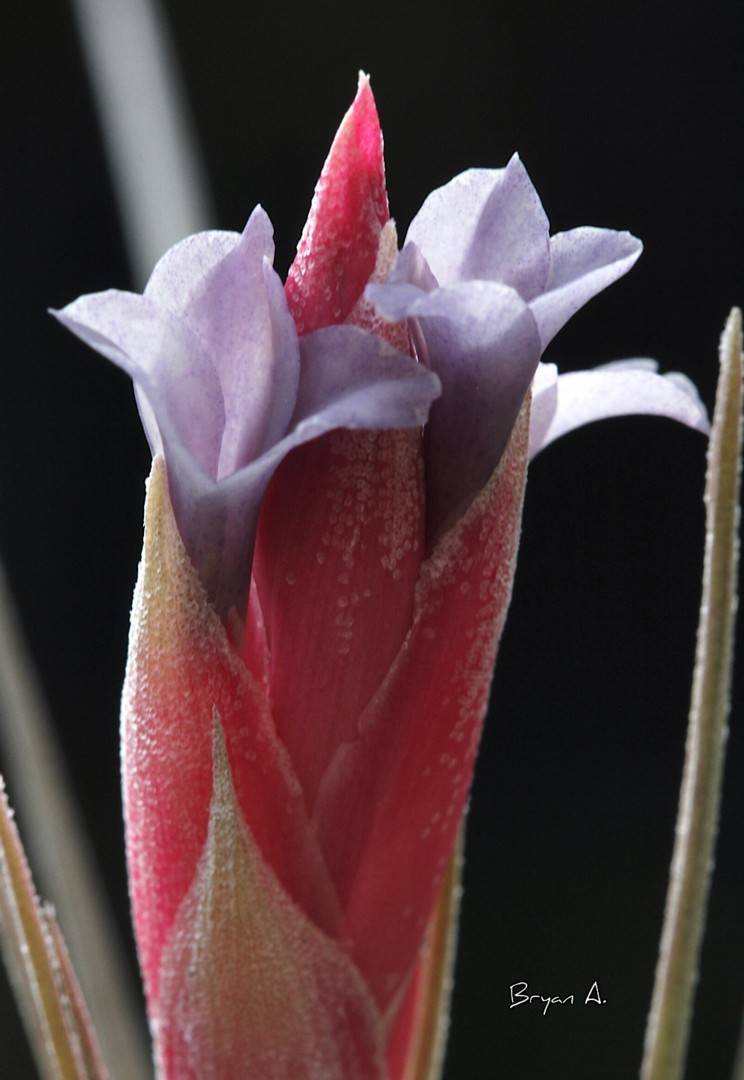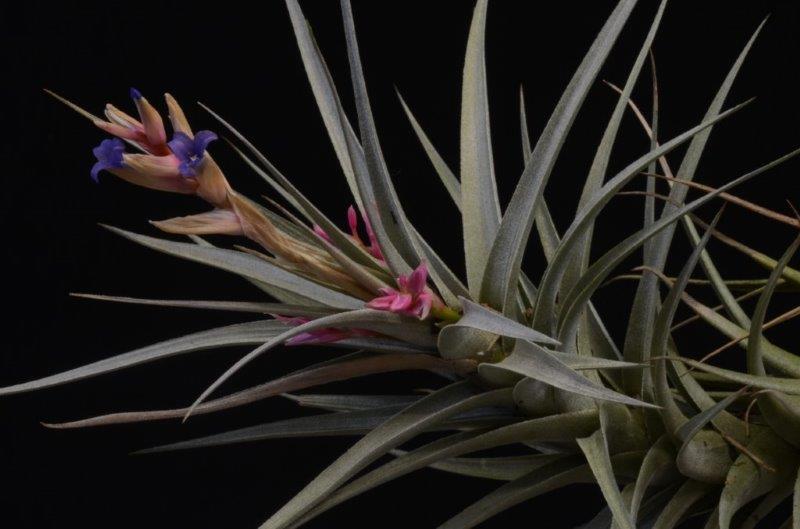
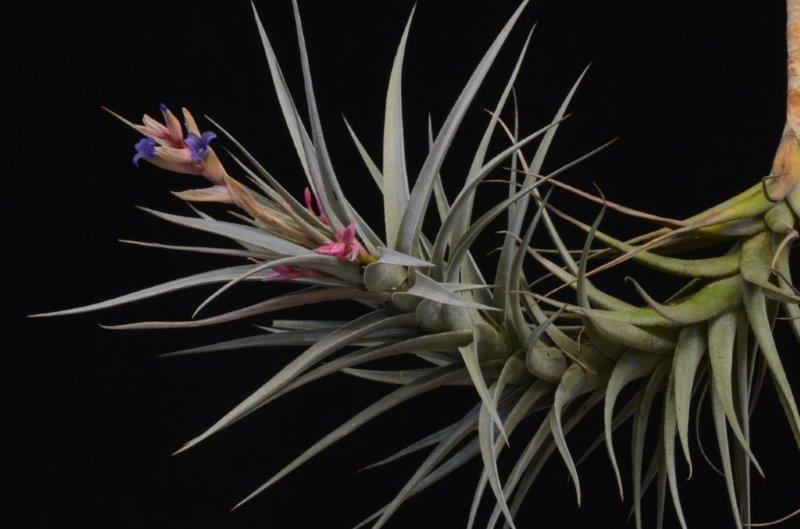
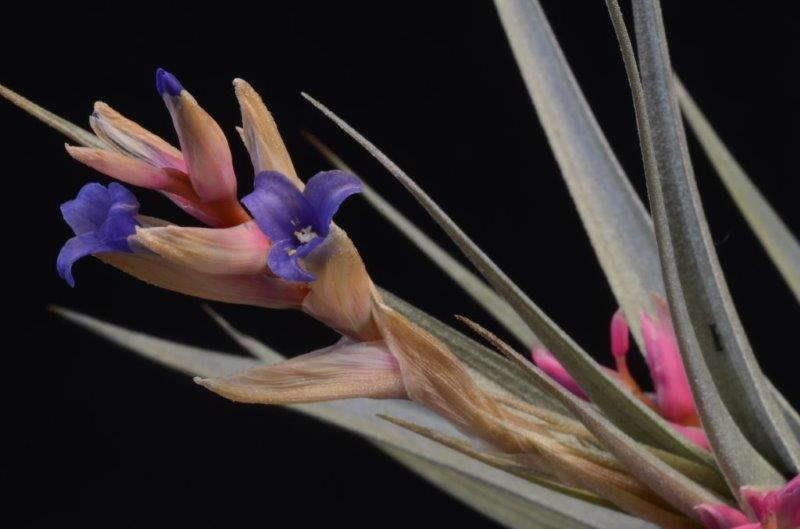
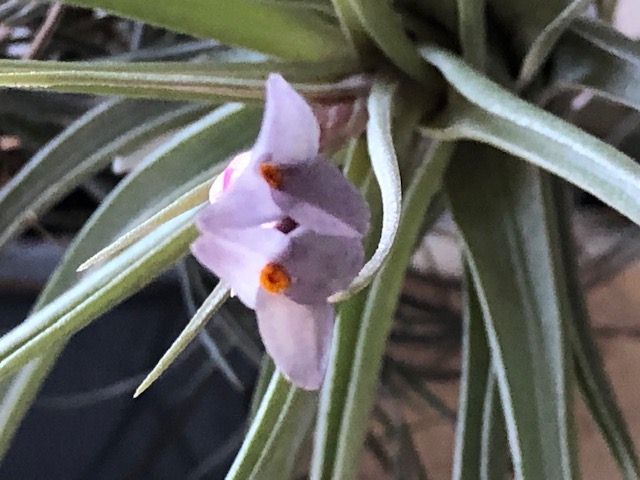
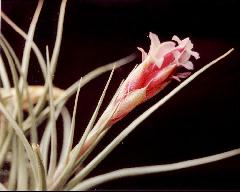
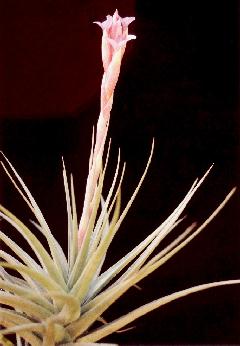
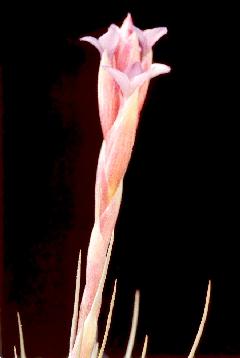
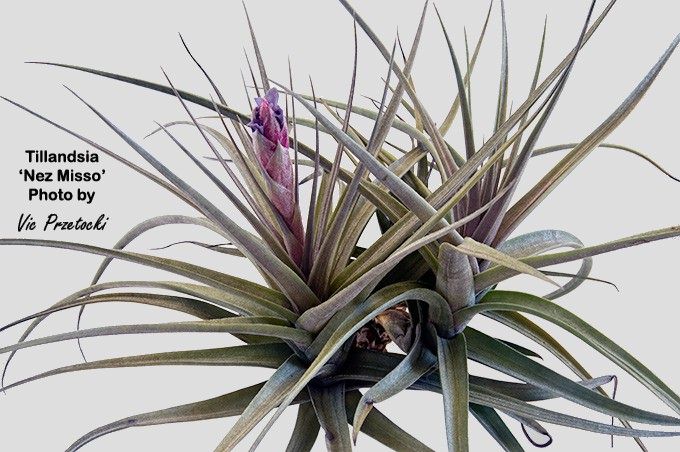
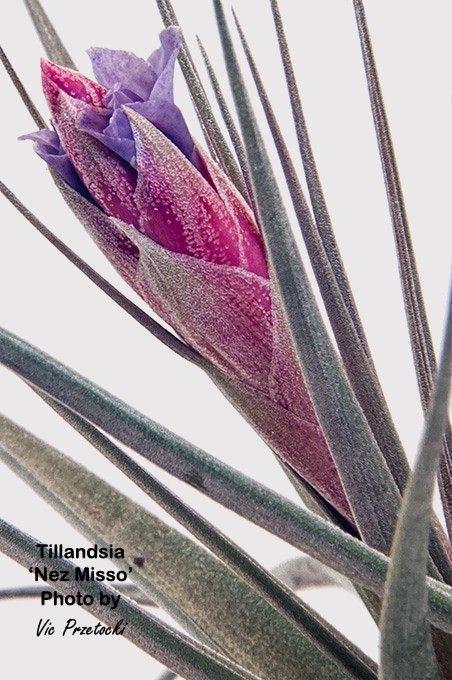
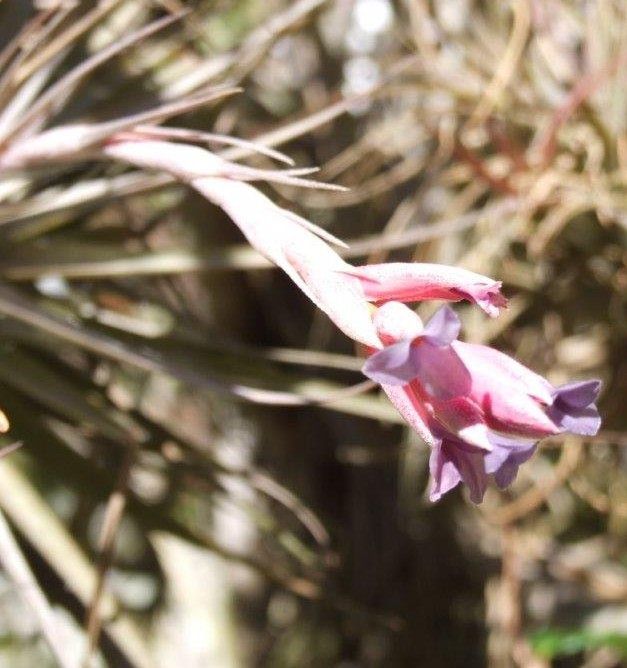
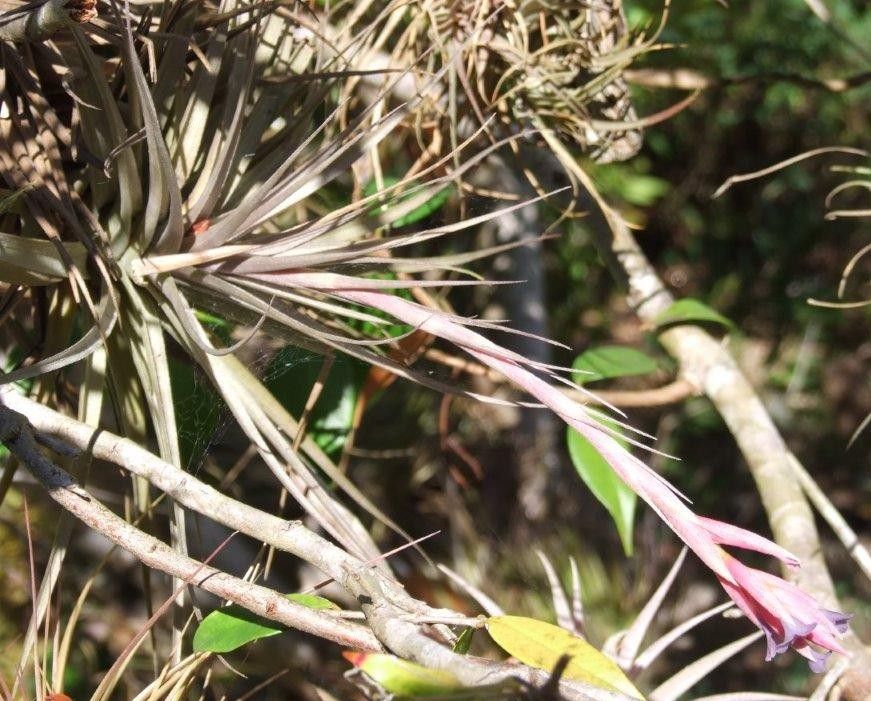
Derek Butcher 16/11/14 .... “Eric: T aeranthos var grisea is only a nurseryman's name for a plant being grown in Europe. Leo even has the plant under this name. Mine came from Renate Ehlers. We call it Nez Misso over here, There are a selection of photos in the BCR. The following is all I could find out about this saga.”
Tillandsia ‘Nez Misso’ or the T. aeranthos type with grey petals!
By Butcher 2004
For some time now this plant has caused raised eyebrows as to whether it was a hybrid made by Nez Misso and if so what were the parents?
At the Tillandsia ‘Conference’ at Albury, Australia, Easter 2004 we were all agreed that 'Nez Misso' was the non-caulescent, sturdy leaved, grey petalled plant and was what Ken Woods was calling 'Grisea'. THE caulescent one with finer leaves and more bluish petals was known as 'Nez Misso' by Ken Woods but known as ‘Bergeranthus’ by Chris Larson! Clearly some action had to be taken!
Maurice Kellett said he can remember as far back as his 'Nez Misso' days in the 1960’s when the plant was known as seed from Oeser to Nez Misso. So the plant did not originate as a hybrid made by Nez Misso. Is it a hybrid? Why the link to ‘grisea’?
There was a Tillandsia dianthoidea var grisea described by Guillaumin in 1947.
Bulletin du Museum National d’Histoire Naturelle 2 e serie, 19:352-353. 1947
118.Tillandsia dianthoidea Rossi var. grisea Guillaum. var. nova.
The scape bracts and the floral bracts are noticeably the colour of those of the type, the petals, instead of being an intense purplish blue (cfr. LOISELEUR - DESLONGCHAMPS: Herbier general de l’amateur, V, t. 304, Botanical Register, XVI, t. 1338, Revue horticole, LXXVII, p. 463), they are a dull slate grey, which if viewed in minute detail, shows many, and minuscule purple dots on a white base very lightly tinted with blue. Marnier ( f. 15, 1947) had it at the Villa Thuret in Antibes for 7 or 8 years
This variety was treated in Smith & Downs as a synonym of T. bergeri. BUT T.dianthoidea var. dianthoidea was treated as a synonym of T. aeranthos! I cannot understand the reasoning for this because the difference between T. aeranthos and T. bergeri is not just the petal colour but also the wavyness of T. bergeri petals. This is not strange when you read the following;
Tillandsia bergeri, a Many Splendored Species
by Robert W. Read in J. Brom. Soc. 38(4):147-9. 1988
“…… T. bergeri keys out next to T. aeranthos (Loiseleur) L.B. Smith on page 689 of Smith and Downs (1977) where it is distinguished solely on the color of the floral bracts ("pale rose" in the former, "dark red" in the latter) and the petals ("dull blue to white" in the former, "dark blue" in the latter). However, in the text description, T. bergeri (p. 837) is said to have stamen "filaments faintly plicate," while T. aeranthos with its nine synonyms of species and varieties has stamen "filaments plicate." In the three specimens illustrated here I found no indication of plications immediately after full anthesis, with only a suggestion of plications in a couple of buds. In his new book on tillandsias, Paul Isley (1987) also makes a point of stressing how indistinguishable these two species are in the vegetative or non-blooming state.
…..Michael Rothenberg, who supplied the plants for this study, suggested that a comparison of the wavy versus rigid character of the petals of the two species might provide some useful information.”
The only difference that Guillaumin reported in 1947 from the type species T. dianthoidea was petals a dull slate grey instead of an intense violet blue. No mention was made of wavy petals.
I maintain this plant is still being grown in Europe as 'grisea' despite Lyman Smith's attempts to get it treated as a T. bergeri. In 1996 I obtained a 'Grisea' from Renate Ehlers in Germany purely because she thought it was a hybrid of some sort and she is not really interested in hybrids! This plant looked awfully like my 'Nez Misso' which caused me great concern because I thought I was looking at a hybrid that had originated in both Germany AND Australia!
I am now of the opinion that Oeser grew the 'grisea' in Germany (and if it is a true variety would breed true from seed) and sent the seed or plant to 'Nez Misso'. Because the name 'grisea' has disappeared according to the academic taxonomists the name 'Nez Misso' should remain at a Cultivar level.
Let us now look at the ‘Nez Misso’ of Ken Woods which has also been around Australia for over 30 years and could well have been in the Nez Misso collection too. It is caulescent with fine green leaves and bluish petals. In the Melbourne area, with the late Clarrie Borch as a link, this was known as ‘bergeranthus’, a rather odd made-up name. Ken Woods has suggested that this cultivar be called ‘Confusion’.
If you are aware of any other historical information on these two cultivars please let us know. Photos will eventually be on http://botu07.bio.uu.nl/bcg/bcr/index.php
